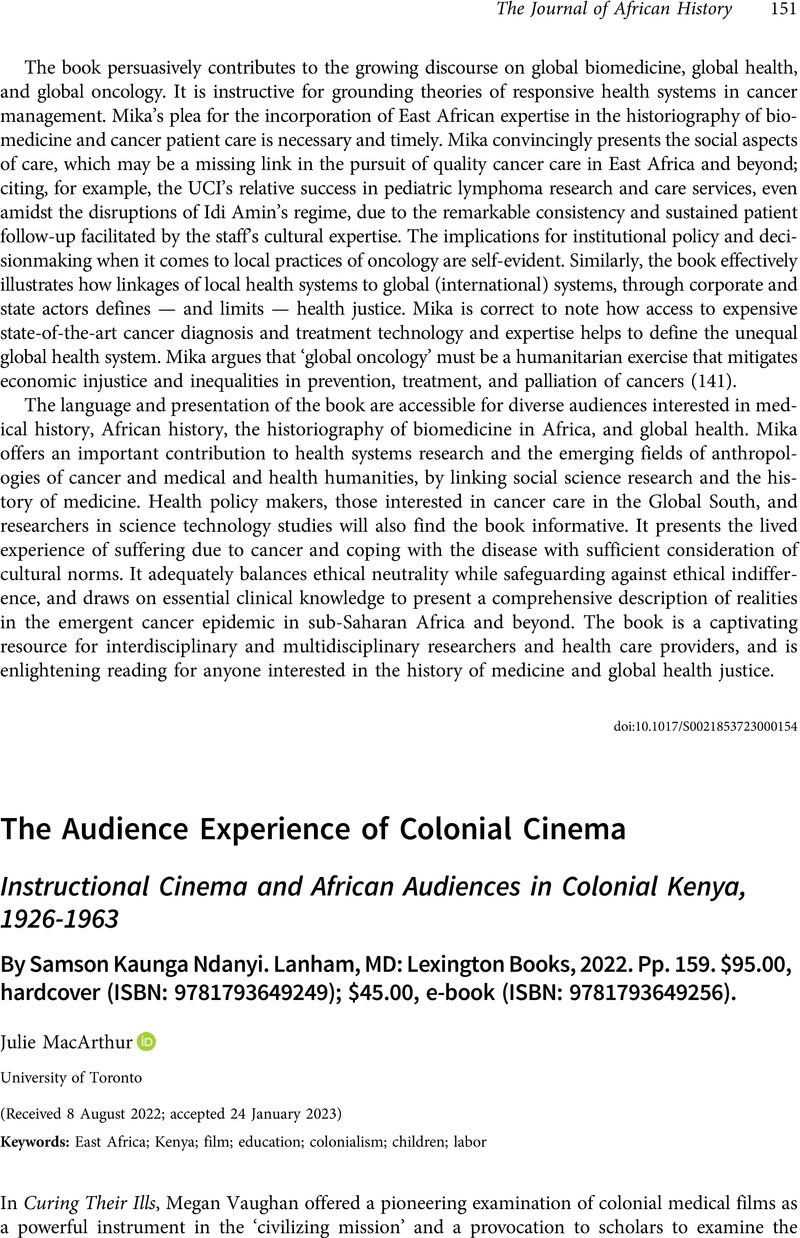No CrossRef data available.
Article contents
The Audience Experience of Colonial Cinema - Instructional Cinema and African Audiences in Colonial Kenya, 1926-1963 By Samson Kaunga Ndanyi. Lanham, MD: Lexington Books, 2022. Pp. 159. $95.00, hardcover (ISBN: 9781793649249); $45.00, e-book (ISBN: 9781793649256).
Review products
Instructional Cinema and African Audiences in Colonial Kenya, 1926-1963 By Samson Kaunga Ndanyi. Lanham, MD: Lexington Books, 2022. Pp. 159. $95.00, hardcover (ISBN: 9781793649249); $45.00, e-book (ISBN: 9781793649256).
Published online by Cambridge University Press: 20 March 2023
Abstract
An abstract is not available for this content so a preview has been provided. Please use the Get access link above for information on how to access this content.

- Type
- Book Review
- Information
- Copyright
- Copyright © The Author(s), 2023. Published by Cambridge University Press
References
1 Vaughan, M., Curing Their Ills: Colonial Power and African Illness (Stanford, 1991)Google Scholar.
2 Anderson, D., ‘Mau Mau at the movies: contemporary representations of an anti-colonial war’, South African Historical Journal, 48:1 (2003), 33–51CrossRefGoogle Scholar; Osborne, M., ‘“The rooting out of Mau Mau from the minds of the Kikuyu is a formidable task”: propaganda and the Mau Mau War’, The Journal of African History, 56:1 (2015), 77–97CrossRefGoogle Scholar.



